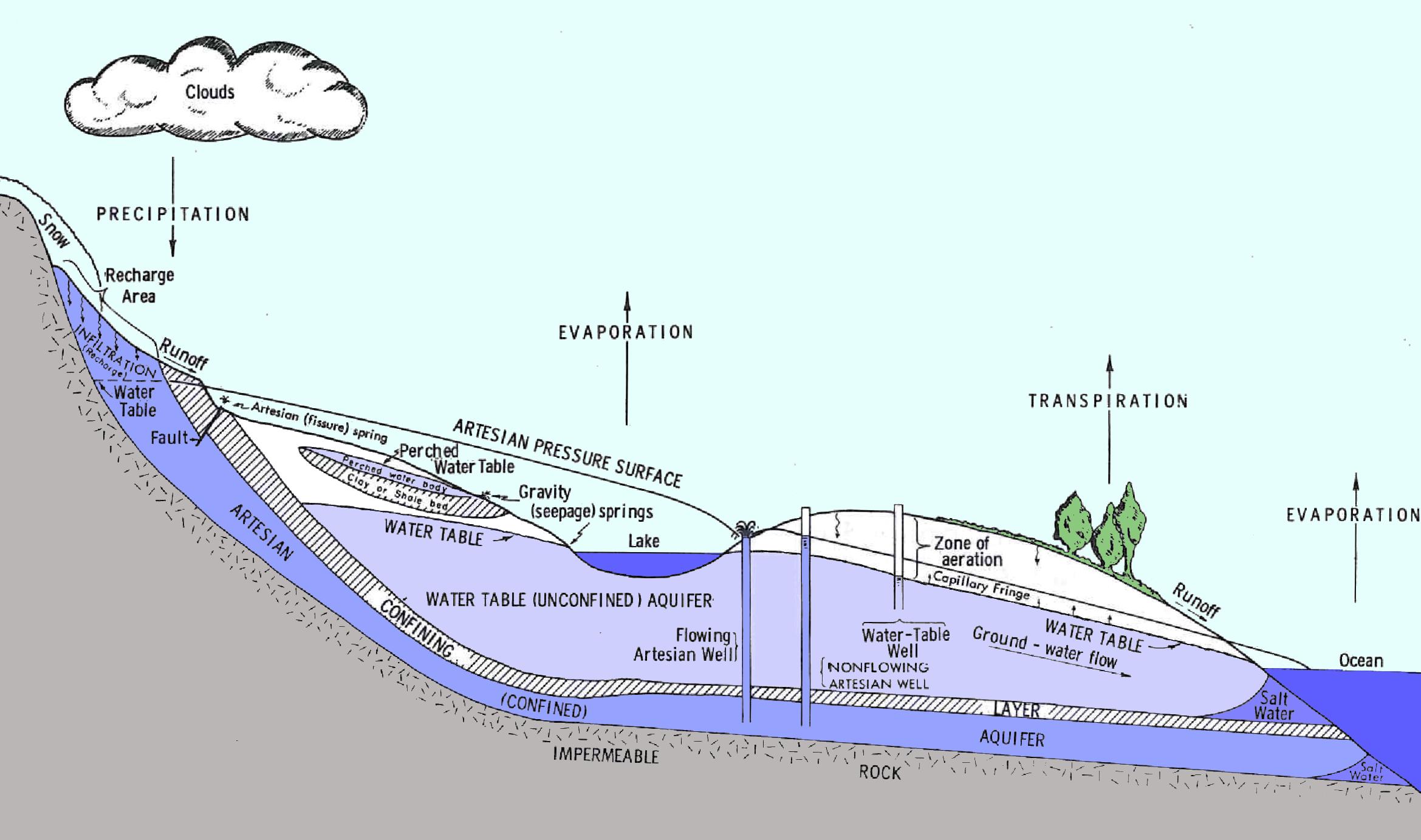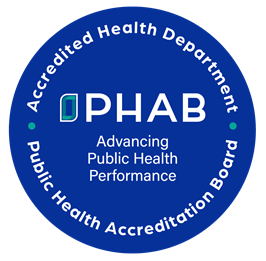Most residents who live in rural areas get their water from onsite sources. Drilled wells are the most common type of onsite water supply in Cattaraugus County, although driven-point wells and springs can still be found serving older homes. These water supplies come in all shapes and sizes and are collectively referred to as "private water supplies".
There are few laws or regulations governing these private water systems and they are not routinely monitored for safety. It is up to the water supply owner to maintain their system and ensure that it is safe to use.

Common Types of Water Supplies
- Drilled Wells - Nearly all modern water supplies are drilled wells. These wells consist of a bore hole, usually at least 50 feet deep, with a steel casing that should extend approximately 12 inches out of the ground. This casing keeps the soil around the hole from collapsing and prevents contamination of the supply by surface water. Water from the well is typically supplied to the home by a submersible pump suspended in the well. A properly constructed drilled well is generally protected from contamination by potentially harmful bacteria.
- Driven-Point Wells - Historically, residents who had shallow aquifers often installed driven-point wells to serve their homes. Many of these wells are still in use today. Typically, they consist of a narrow pipe approximately an inch in diameter, with a screened "point" on one end that is driven into the ground. Water is pulled up through this pipe using a jet pump. This type of well is relatively shallow, not usually more than 20 feet deep. Because of this, driven-point wells are often subject to contamination from surface sources.
- Springs - A spring is a place where groundwater comes to the surface. There are two types of springs which provide different qualities of water and different amounts of protection from contamination. In most cases, it is not possible to distinguish between the two without extensive study. Because of this, spring water sources are not recommended without a permanent disinfection system.
- Gravity springs are the most common type found in Cattaraugus County. These water sources collect water from surface drainage. After a rainfall, water soaks into the ground and slowly travels across the landscape through the soils. At certain places, this water flow becomes concentrated and comes to the surface creating a gravity spring. Water is captured using a "spring box" and piped to the residence. If the spring is higher in elevation than the building, gravity may supply adequate water pressure. Otherwise, a holding tank and pump may be necessary. This type of spring is highly susceptable to contamination and cannot be adequately protected.
- Artesian springs are much less common and are only found in specific circumstances. These springs occur at an outcropping of a "confined" aquifer. A confined aquifer is a permeable sand or gravel layer that is covered by an impermeable silt or clay layer which protects it from direct infiltration of surface water. Water from these types of springs may travel hundreds of feet underground before coming to the surface. As a result, these springs can provide good quality water if they are properly developed and protected. In order to develop these springs, the site must be carefully excavated back to the confined aquifer where the water is intercepted before it can mix with surface water from the layers above.

Well Construction Standards
The NYS Department of Health has established state-wide standards for drilled wells including siting, construction methods, and recommendations for water quality testing (see Appendix 5-B: Standards for Water Wells). However, you do NOT currently need a permit from the health department to install a well for private use. New residential water sources are part of your residence and are included in your building permit.
It is up to your local Code Enforcement Office to ensure that your newly constructed well meets current NYS standards (see Fact Sheet #6: Guidance for Code Enforcement Officials). If it is not possible to construct a well that meets these standards, you must obtain a waiver from the Heath Department to provide to your Code Enforcement Officer.
Your well casing should extend at least 18 inches above the ground, be structurally sound and fitted with a screened well cap to prevent entry by insects and other animals. The area around your well should be graded using impervious clay soil or bentonite so any surface water flows away.
Due to the potential for contamination, driven-point wells and spring sources are not recommended for new construction.
All water well contractors must be registered with the NYS Department of Environmental Conservation and well logs are submitted to the NYSDEC following construction. More information about well drilling and a search tool to locate registered water well contractors can by found on the NYSDEC Water Well Contractor Program page.
Protecting Your Well
Planning is critical when developing a new parcel. Before you drill your new well, you should prepare a layout of your property and ensure that all of the separation distances will be met. A poorly placed well can severely restrict your options for the placement of other things like your sewage disposal system or fuel storage tanks. In the worst case scenario, you may be forced to either encroach on your well and risk contamination of your water supply or drill another well.
The New York State Department of Health has developed a list of standard separation distances from drinking water wells for many different contamination sources. These separation distances are intended to limit the possibility of contamination of properly constructed drilled wells. It may not be possible to protect poorly constructed wells, driven-point wells or springs, even if these separation distances are maintained.
Common separation distances for new wells in residential settings are shown in the chart below. A complete list of standard separation distances can be found in Appendix 5-B on the NYS Department of Health website.
|
Contaminant Source |
Distance (Feet)* |
|---|---|
|
Land application or storage of manure |
200 |
|
Seepage pit |
150 |
|
Sand Filter, Absorption Bed, or Tile field |
100 |
|
Septic tank, aerobic unit, watertight effluent line to distribution box |
50 |
|
Stream, lake, watercourse, drainage ditch, or wetland |
25 |
*Note: Separation distances from contaminant sources need to be significantly increased if the contaminant source is located upgradient from a well or if aquifer water enters the well (i.e., at the bottom of the casing) at less than 50-feet below grade.
Additional Information
Gas Hazards in Home Environments
Water Testing Recommendations for Residential Wells Neighboring Gas Well Development Sites


